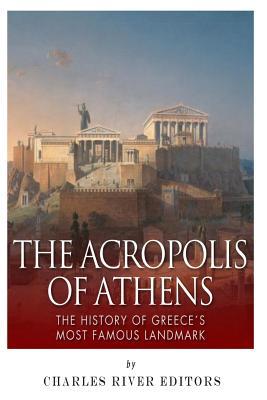*Includes ancient accounts describing the history of the Acropolis.
*Includes a bibliography for further reading.
"What I would prefer is that you should fix your eyes every day on the greatness of Athens as she really is, and should fall in love with her. When you realize her greatness, then reflect that what made her great was men with a spirit of adventure, men who knew their duty, men who were ashamed to fall below a certain standard. If they ever failed in an enterprise, they made up their minds that at any rate the city should not find their courage lacking to her, and they gave to her the best contribution that they could." - The Funeral Oration of Pericles, quoted by Thucydides
The Acropolis, which literally means "a city on the heights," is a citadel whose currently surviving structures were mostly built during the 5th century B.C. in honor of Athena, the patron goddess of Athens. It functioned as a sacred precinct that contained the city's most important religious and municipal structures, many of which have remained relatively intact for over 2,000 years. The Propylaea (the gateway to the Acropolis), the Parthenon (the principal shrine to the goddess), the Erechtheion (a shrine that supposedly houses the burial grounds of mythical Athenian kings), and the Temple of Athena Nike all survive to this day, and for these reasons, the Acropolis is perhaps the definitive and most eloquent expression of classical architecture, if not of the classical form itself.
In order to understand whether and how this might be the case, it is important to reflect not only on the aesthetic quality of the structures themselves but also to seek out the historical, religious and philosophical contexts that clarify the structures' purpose and significance. Naturally, like many other works of its type and influence, the structures on the Acropolis embody certain traditions, but they also depart from some traditions and also transformed others. Indeed, just as the Acropolis is Athens' most striking feature, it is also a perfect representative of the city's golden age, both in terms of classical style and civilization as a whole. It's no wonder that people continue to view the Acropolis as both a portal to antiquity but also a spot with living structures whose importance continues to reverberate to this day.
The Acropolis of Athens: The History of Greece's Most Famous Landmark comprehensively covers the history and evolution of one of the most famous hills in the world. Along with a bibliography and pictures, you will learn about the Acropolis like you never have before, in no time at all.
